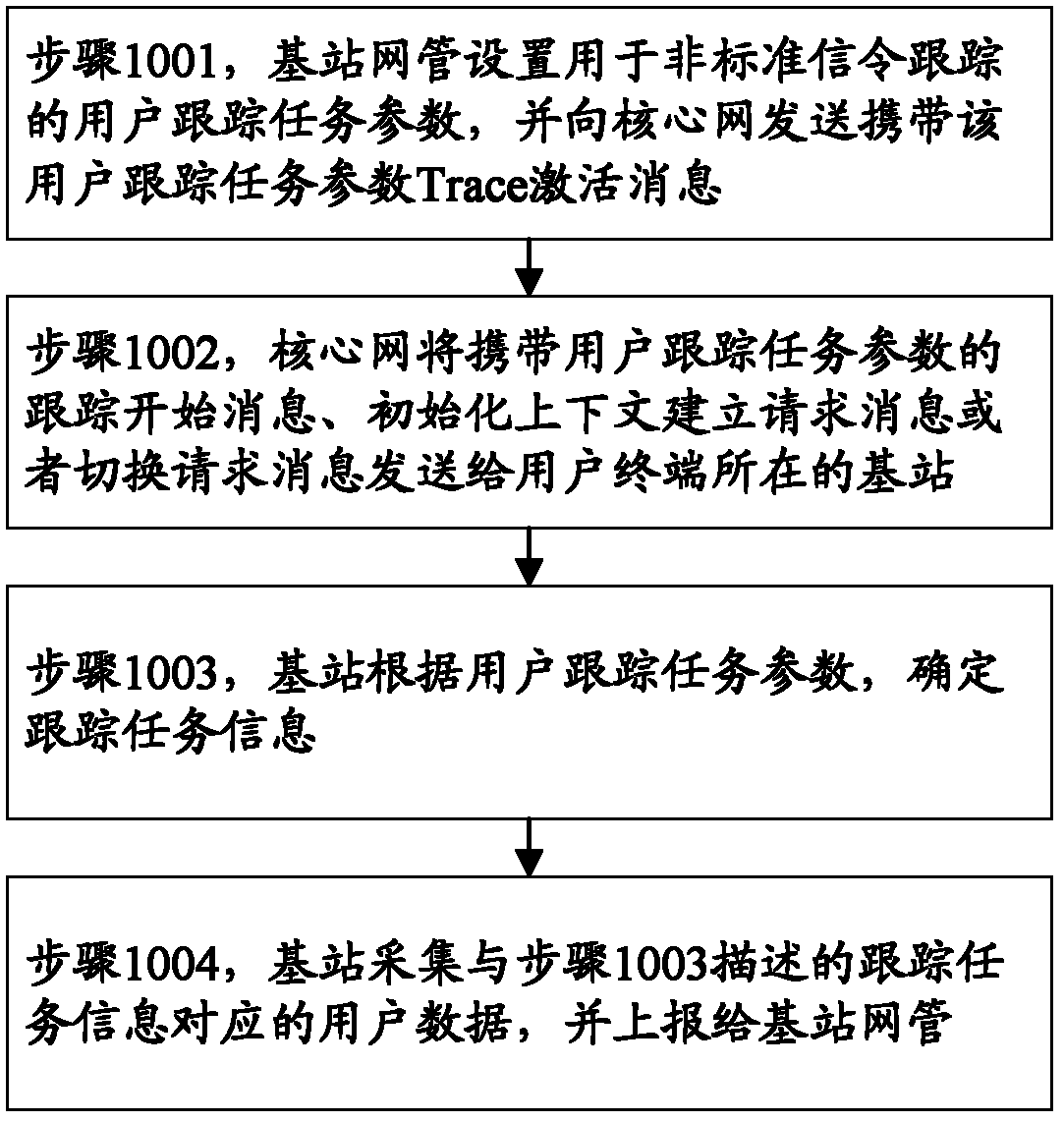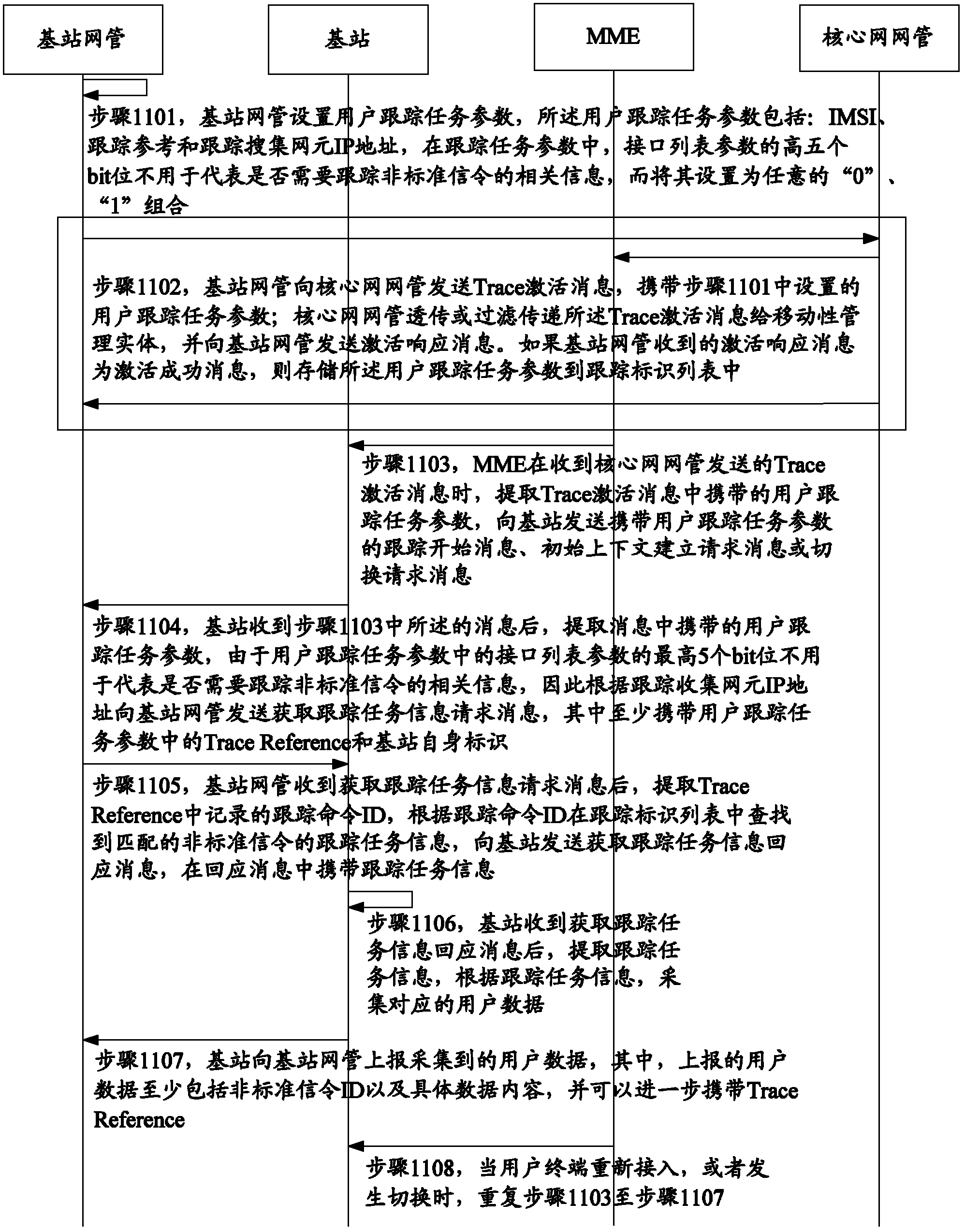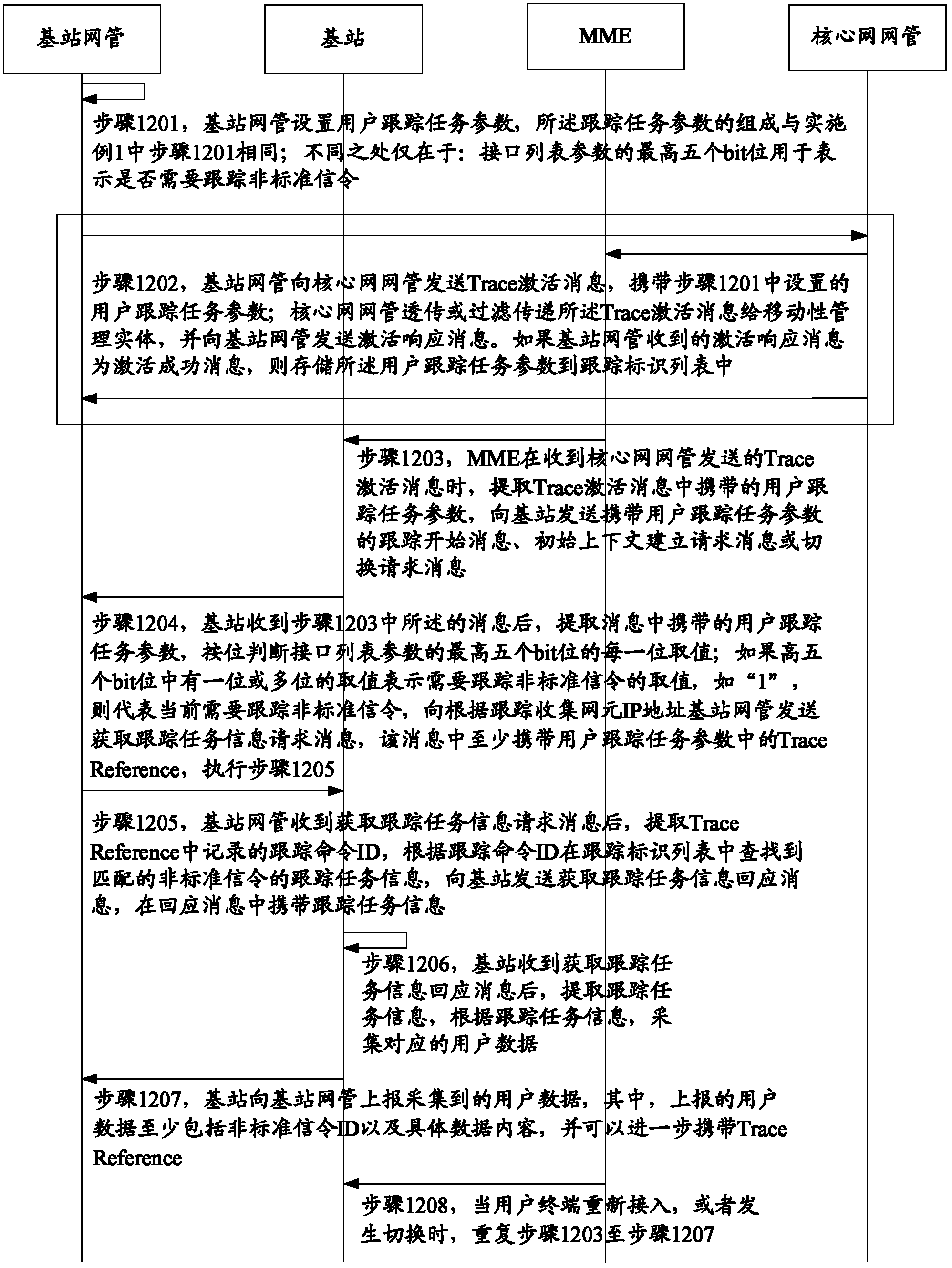Method of user data tracking and system of user data tracking
A user data and user technology, applied in the field of user data tracking of non-standard signaling, can solve the problem that the 3GPP protocol cannot track user data of non-standard signaling
- Summary
- Abstract
- Description
- Claims
- Application Information
AI Technical Summary
Problems solved by technology
Method used
Image
Examples
Embodiment 1
[0071] figure 2 It is a timing diagram of Embodiment 1 of the present invention, such as figure 2 As shown, the specific implementation includes the following steps:
[0072] Step 1101, the base station network manager sets user tracking task parameters.
[0073] The user tracking task parameters include: IMSI, Trace Reference, IP address of Trace Collection Entity (IP address of Trace Collection Entity), eNB interface list (List of interfaces for eNB), that is, interface list parameters; wherein, IMSI is used to identify the required The user to be traced; Trace Reference is used to record the trace command ID; the IP address of the trace collection network element is used to identify the base station network management that needs to collect user data; the upper five bits of the interface list parameter are not used to represent whether non-standard signaling needs to be traced , but set it to any combination of "0" and "1", such as "00001", "01010" and so on.
[0074] T...
Embodiment 2
[0091] image 3 It is a timing diagram of Embodiment 2 of the present invention, such as image 3 As shown, the specific implementation includes the following steps:
[0092] Step 1201, the base station network manager sets user tracking task parameters, the composition of the user tracking task parameters is the same as step 1101 in embodiment 1; the only difference is: the highest five bits of the interface list parameter are used to indicate whether tracking of non- Standard signaling.
[0093] Step 1202 and step 1203 are respectively the same as step 1102 and step 1103 in Embodiment 1.
[0094] Step 1204, after receiving the message described in step 1203, the base station extracts the user tracking task parameter carried in the message, and judges the value of each of the highest five bits of the interface list parameter by bit; if the higher five bits The value of one or more digits indicates that the value of non-standard signaling needs to be tracked. For example, "...
Embodiment 3
[0099] Figure 4 It is a timing diagram of Embodiment 3 of the present invention, such as Figure 4 As shown, the specific implementation includes the following steps:
[0100] Step 1301, the base station network manager sets user tracking task parameters, and the user tracking task parameters include: IMSI, IP address of network elements for tracking collection, and interface list parameters. Wherein, each of the highest five bits of the interface list parameter is used to represent whether a type of non-standard signaling needs to be tracked.
[0101] Step 1302 and step 1303 are respectively the same as step 1102 and step 1103 in Embodiment 1.
[0102] Step 1304, after the base station receives the message described in step 1303, it extracts the user tracking task parameters carried in the message, and determines the corresponding non-standard signal according to the value to be tracked in the highest 5 bits of the interface list parameter. order, and determine the tracki...
PUM
 Login to View More
Login to View More Abstract
Description
Claims
Application Information
 Login to View More
Login to View More - R&D
- Intellectual Property
- Life Sciences
- Materials
- Tech Scout
- Unparalleled Data Quality
- Higher Quality Content
- 60% Fewer Hallucinations
Browse by: Latest US Patents, China's latest patents, Technical Efficacy Thesaurus, Application Domain, Technology Topic, Popular Technical Reports.
© 2025 PatSnap. All rights reserved.Legal|Privacy policy|Modern Slavery Act Transparency Statement|Sitemap|About US| Contact US: help@patsnap.com



